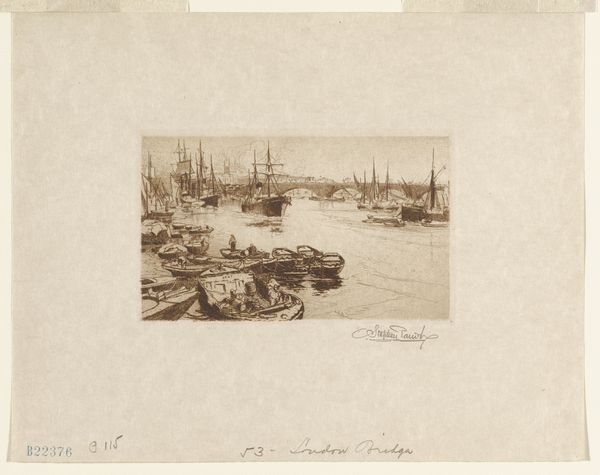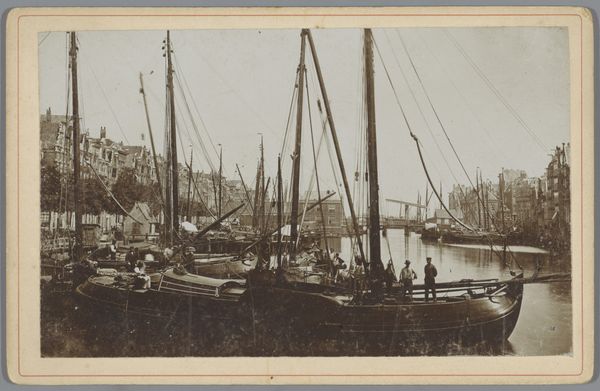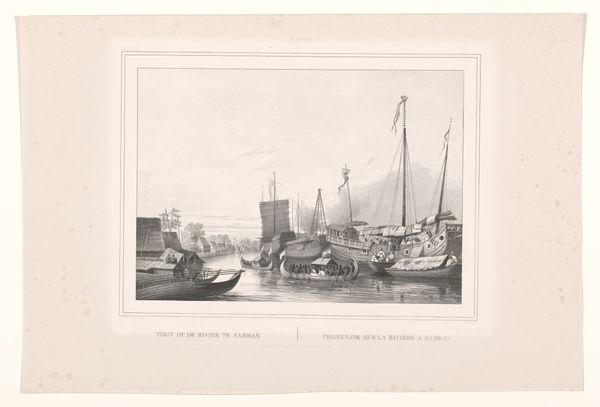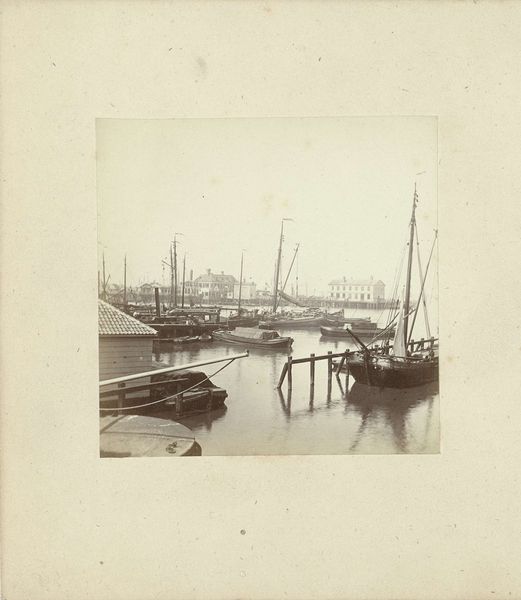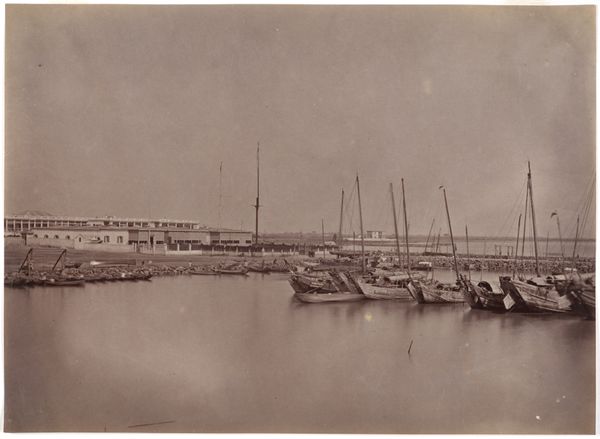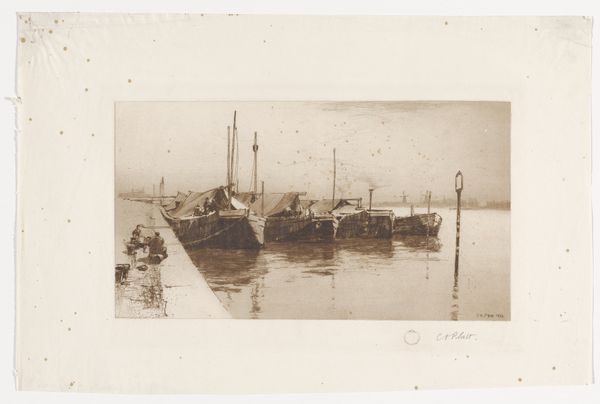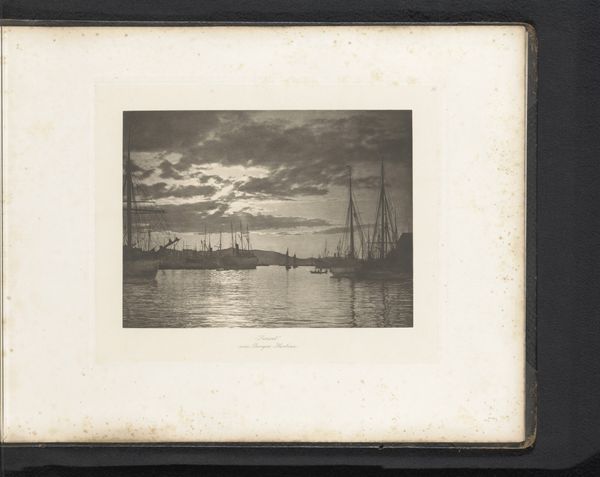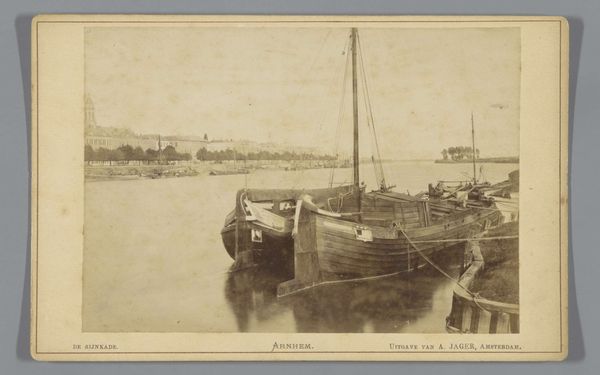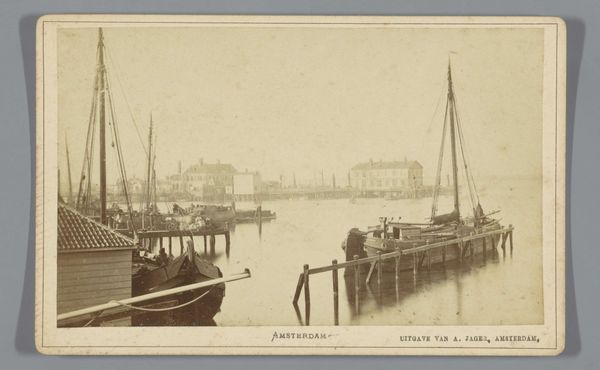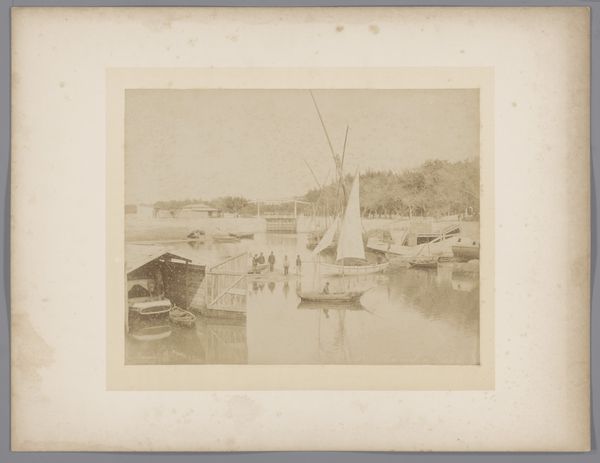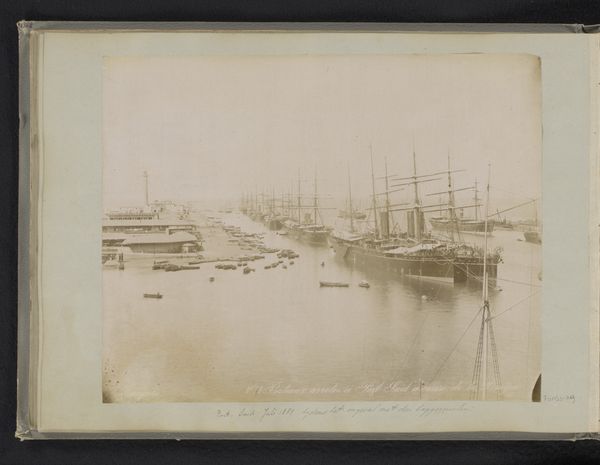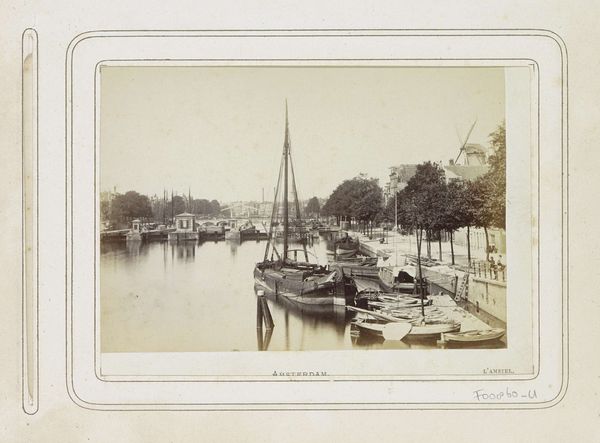
Gezicht op het Damrak in noordelijke richting met op de voorgrond een beurtschip 1860 - 1875
0:00
0:00
print, photography
# print
#
landscape
#
photography
#
cityscape
Dimensions: height 107 mm, width 166 mm
Copyright: Rijks Museum: Open Domain
Curator: Immediately striking is the way this cityscape uses the waterways as a mirror, doubling the intensity of the urban landscape. Editor: Indeed. We are looking at "Gezicht op het Damrak in noordelijke richting met op de voorgrond een beurtschip" – or a view of the Damrak facing north with a barge in the foreground – an albumen print made by Andries Jager sometime between 1860 and 1875. It is currently held in the collection of the Rijksmuseum. Curator: I find the tonal range captivating, especially the interplay of light and shadow that animates the buildings along the canal. The repetition of vertical masts also draws my eye, guiding me through the scene, almost like musical staffs on which to read the rhythm of the port. Editor: The image certainly encapsulates a key period in Amsterdam's history. You see the Damrak, a vital artery for commerce, bustling with activity. These canals weren’t merely picturesque; they were crucial infrastructure for the city's economic power. Note too that photography like this, enabled documenting this transformation for wider consumption and urban pride. Curator: Looking at it more closely, there's a striking geometric quality – the rigid rectangles of the buildings contrasted with the organic curves of the boats. Then the reflections, which almost entirely abstract the bottom portion of the piece... Editor: Exactly, which, structurally, provided vital access facilitating trade, a pillar of Dutch society then and a significant national symbol of ingenuity over nature itself. It shows how infrastructure literally underpinned the Netherlands rise as a global superpower. The camera then made accessible, understandable, that network and its function in social terms to ordinary folk. Curator: Fascinating how form follows function then... And yes, seeing it now, Jager's manipulation of focus gives the scene depth. It pushes some vessels out of sharp detail. He emphasizes those closer to the foreground; the rest almost dissipate into a generalized haze. Editor: That detail provides not just aesthetics but historical context to understand the visual and cultural consumption, as new photographic technology intersected with traditional artistic motifs. These prints became widely circulated, shaping public perception of Amsterdam. Curator: Overall, the image’s organization leads to a captivating tension and resolution between architectural and nautical elements and historical dynamism. Editor: Yes, through the study of art like this we understand the convergence of socio-economic progress and shifting means for communicating it within society itself.
Comments
No comments
Be the first to comment and join the conversation on the ultimate creative platform.
